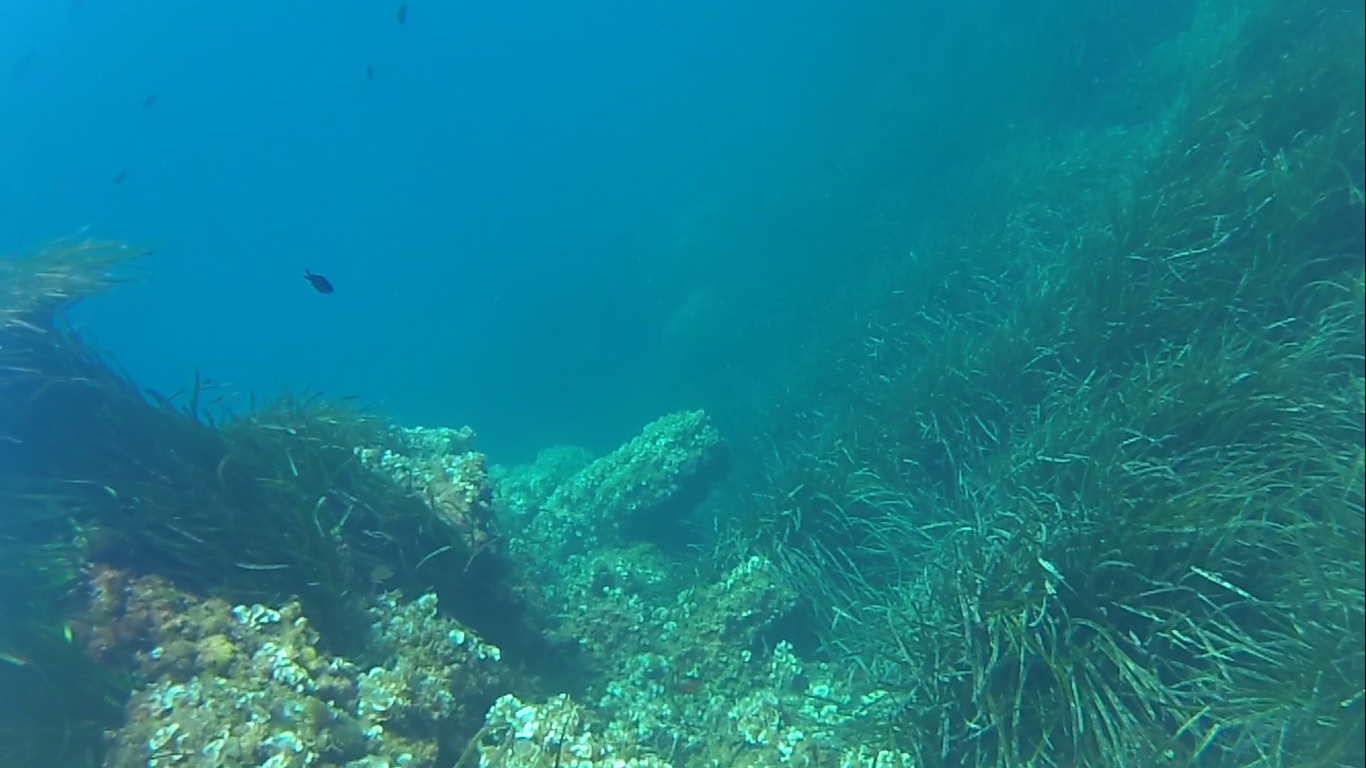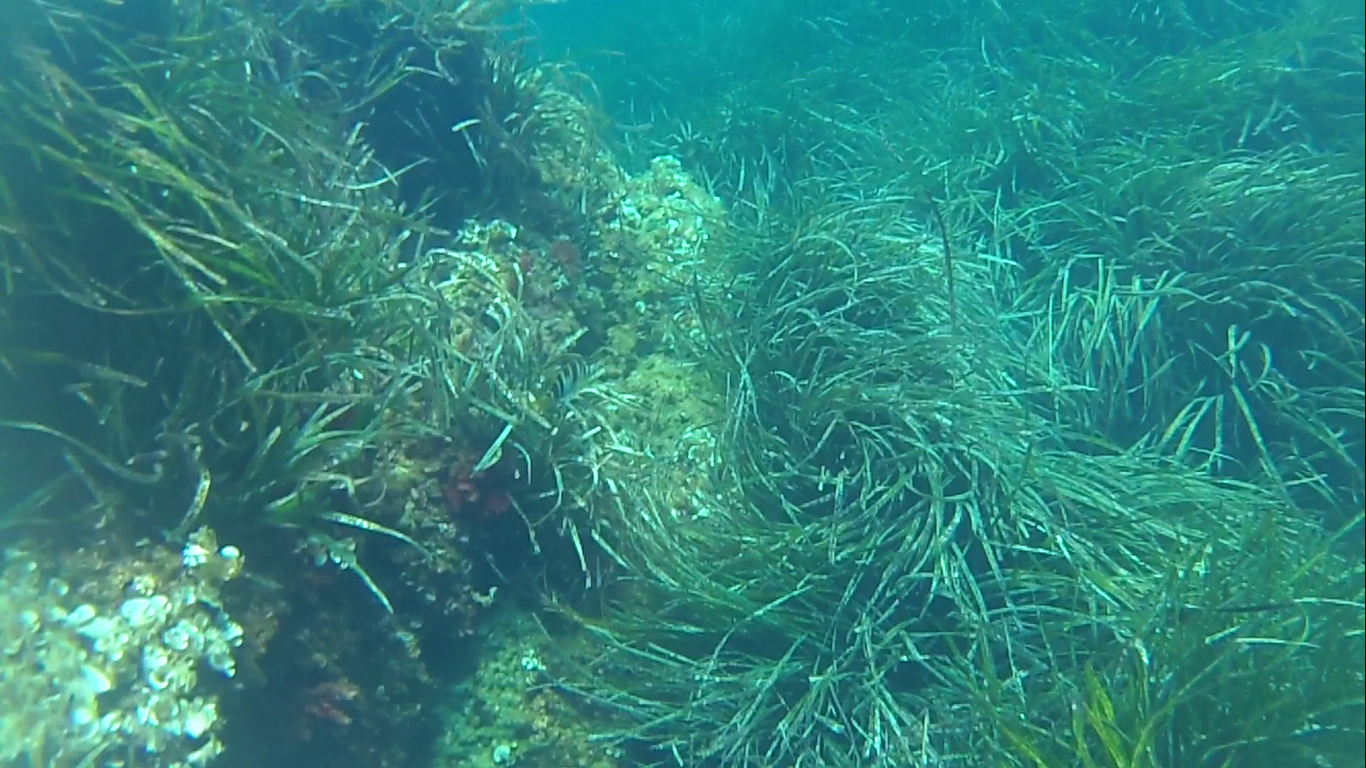Oceanic Posidonia

Posidonia Oceanica Oceanic aquatic plant endemic Mediterranean Sea
Oceanic Posidonia (L.) Delila, 1813 is an aquatic plant, endemic to the Mediterranean Sea, belonging to the family Posidoniacee (Angiosperms Monocotyledons). It has features similar to terrestrial plants, has roots, a rhizomatous stem and leaves up to a meter long ribbon and united in tufts of 6-7. It blooms in autumn and in spring produces floating fruits commonly called “sea olives”. Posidonia Oceanica Oceanic aquatic plant endemic Mediterranean Sea
Shape of the underwater meadows that have considerable ecological importance, constituting the climax community of the Mediterranean Sea and exerting a significant action in the protection of the line of coastline from erosion. Inside live many animal and plant organisms that are the Prairie nourishment and protection. The “posidonieto” is considered a good bio-indicator of the quality of coastal marine waters.
Ecology He lives between 1 and 30 meters deep, exceptionally and only in very clear water up to 40 meters, and withstands temperatures between 10 and 28 ° C. It is a plant that requires relatively constant salinity values for which there is hardly near the mouths of rivers or lagoons. It needs a bright light, so the light is one of the main limiting factors. Colonizes the sandy or debris which adheres by means of the rhizomes and on which form vast prairies, or posidonieti, high density (over 700 plants per square meter). A small part of this production (3-10%) is used by herbivores, a large part goes to the decomposers and another percentage is stored inside the mattes in leaves and rhizomes.
The grasslands have an upper and a lower limit. The first, the point at which begins the prairie starting from the coast, is rather sharp, while the second, the point where it ends, can be of three types:
progressive or climatic limit: with increasing depth, decreases the density of the foliar dossiers because the light becomes a limiting factor. It is characterized by the presence of rhizomes plagiotropi ending suddenly. Net or edaphic limit: the type of substrate does not allow the progression of the rhizomes, passing for example from a sandy substrate to a rocky. It is characterized by the absence of matte and by the presence of a high density of leaf files. limit erosion: it is linked to the strong hydrodynamic that does not allow the prairie to progress. It is characterized by high density and the presence of matte. Limit regressive: it is caused by pollution that makes the waters of a given area turbid, thus preventing light penetration deeper. There are only matte death. In sheltered areas and low hydrodynamic, which causes increased sedimentation, the matte can stand up to the leaves do not reach the water surface. It creates in this way a said recif barriers barrier. Between the barrier and the coast you can form a lagoon, and this prevents the progression of the grassland towards the coast. The recif barriers has a very important role in protecting the coastline from erosion.
In areas with high hydrodynamic, however, the rhizomes can be undermined, creating formations such intermatte, formed by erosion channels.
Posidonia oceanic as bioindicator
For nearly twenty years, it is expanding its use as a biological indicator of Oceanic Posidonia. Beams blocks of oceanic Posidonia. The analysis of the beam density is one of the prairies study methods. In fact, the plant has all the characteristics of a good bioindicator:
It is a benthic species; It has a long life cycle; It has spread widely throughout the Mediterranean; It has a great capacity for concentration of pollutants in its tissues; It is very sensitive to environmental changes. Through the study of grasslands it is therefore possible to have a fairly reliable picture of the environmental quality of coastal marine waters.
VIDEO
https://www.intotheblue.it/2018/03/02/posidonia-oceanica-intotheblue-it-egagropilo/
https://www.intotheblue.it/2018/02/25/matta-posidonia-oceanica-morta/
Comment (8)
Comments are closed.


I do not even know how I ended up here, but I thought this post was good. I don’t know who you are but certainly you are going to a famous blogger if you aren’t already 😉 Cheers!
Hi, just wanted to tell you, I loved this blog post. It was practical. Keep on posting!
Excellent site. Plenty of useful info here. I am sending it to several friends ans additionally sharing in delicious. And of course, thanks on your effort!
http://learninghints.eu
continuously i used to read smaller posts which as well clear their motive, and that is also happening with this post which I am reading now.
http://educationpoints.eu
Very neat blog article. Fantastic.
I simply want to mention I’m new to weblog and really loved you’re web blog. Probably I’m likely to bookmark your site . You certainly have good article content. Thank you for revealing your web page.
I hope you all are having a great weekend. I added a new list. This one is smaller, but still useful. I think the next one will be bigger.